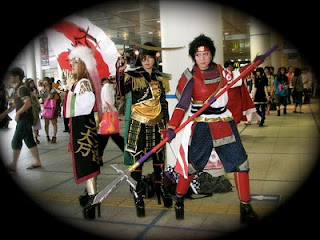Sorry but this is not of jokes about urinating, defecating or other necessary but kinda icky bodily functions. Back in my country, I used to travel a lot because of the nature of a certain project I got involved in. And because of that, I've seen some of the worst and some of the best comfort rooms. More often than not, it would be the former. I remember one time when I was still in college, there was this Australian guy who said "How could you call it a comfort room? Do you feel any comfort when using it?" Sadly, I had to agree. When I go on travel, I would ask our driver to stop in gasoline stations because they usually have cleaner and well maintained toilets, ergo there's a little comfort in using them.
Here in Japan though, you wouldn't have such worry. So far, in the places I have been to (school, park, office, etc.), they all provide you the comfort you need and then some more...
 |
| Wanna make sure it's clean? A cleaning liquid is provided if you want to wipe the seat before doing your thing. Tissues abound too. |
 |
| The seat can be made warm, esp. during the cold seasons, with flushing water sound effect while doing your thing, and some other buttons. Flushing via hand sensor. |
 |
| Does your little one wanna go to the loo too? |
 |
| Need to change baby's diapers? |
 |
| Baby in tow? Let him have a seat while relieving yourself. You can make cutie faces at each other while you're at it. |
Now, these are just some of the things you can see inside a ladies' comfort room. I'd like to see what's inside a men's room too but I'd probably get caught for bad behavior if I suddenly go in men's comfort rooms.
By the way, there are basically two types of toilets, the Western which is the second picture and the Japanese style. I'll post a pic of it in another post soon.









